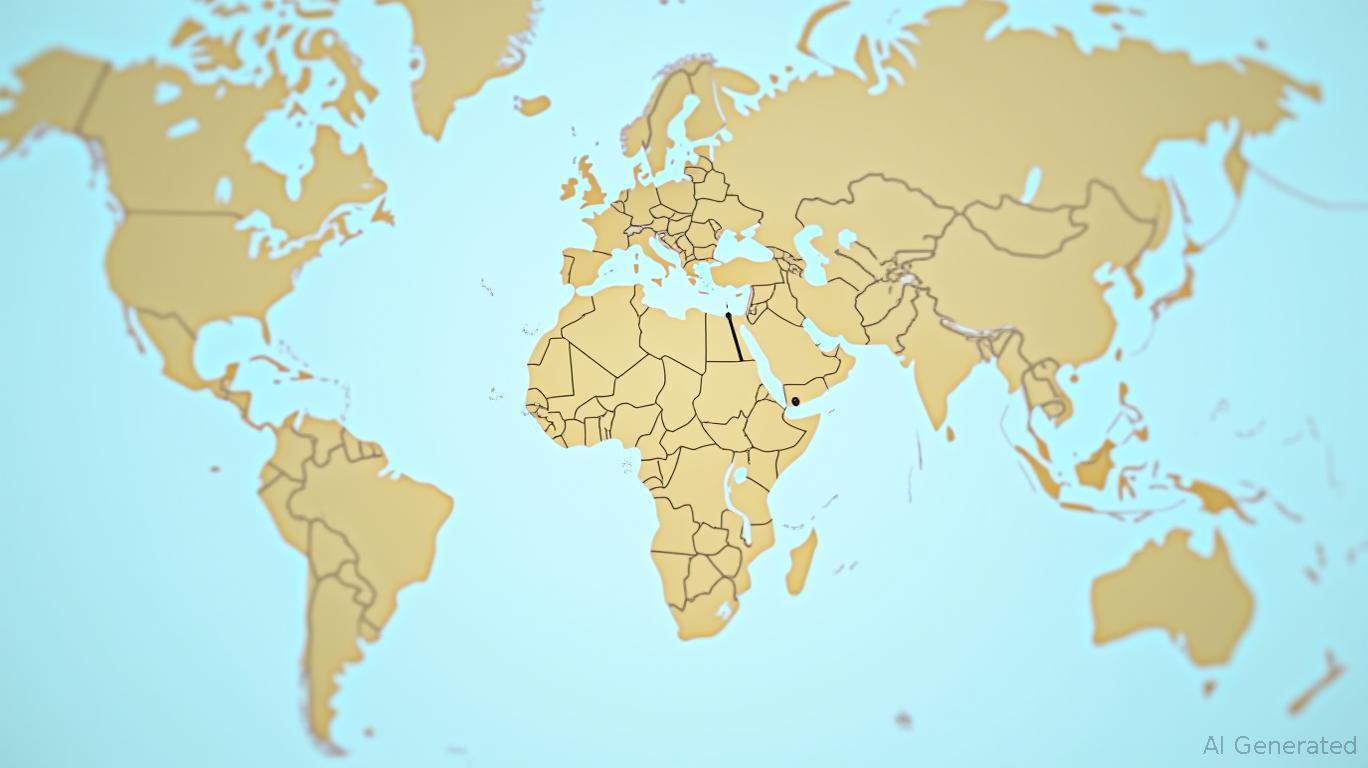Gavi's Evolving Ecosystem: Navigating Investment Opportunities in a Shifting Global Health Landscape
The global health sector is undergoing a seismic shift as traditional aid budgets dwindle, yet the demand for vaccines and disease prevention remains urgent. Gavi, the Vaccine Alliance, stands at the nexus of this transformation, pioneering strategies to secure its $9 billion funding goal for 2026–2030 while diversifying its donor base. For investors, this pivot presents a unique opportunity to capitalize on resilient health partnerships and emerging market dynamics. Here's how to parse the risks and rewards.
The New Donor Landscape: Where to Look
Gavi's traditional reliance on the U.S. and U.K. is giving way to a more geographically dispersed funding model. Key emerging donors include Portugal, which has increased commitments, and Morocco, where Gavi's CEO is actively courting contributions tied to its vaccine manufacturing ambitions (e.g., the Casablanca-based Marbio facility). Meanwhile, Saudi Arabia and UAE are expanding their multilateral engagement, while South Korea and China are boosting overseas development aid.
Investors should monitor these regions for infrastructure projects, public-private partnerships, and local vaccine production hubs—areas where companies like CSL Limited (CSL) or Baxter International (BAX) could gain contracts.
The Co-Financing Boom: A Double-Edged Sword
Lower-income countries are now contributing $255 million annually to their immunization programs—a 19% increase from 2023—with projections to hit $300 million by 2025. This “country ownership” model reduces reliance on foreign aid but carries risks: political instability or economic downturns could disrupt funding.
Investors might consider ETFs tracking emerging market health sectors, such as the iShares Global Healthcare ETF (IXJ), or companies like Johnson & Johnson (JNJ), which have deep ties to local health systems.
Pandemic Preparedness: A Growth Sector
Gavi's pivot to pandemic stockpiles (e.g., Ebola, cholera vaccines) and outbreak prevention is attracting private capital. The African Vaccine Manufacturing Accelerator (AVMA), funded to $1.2 billion, exemplifies this trend, with firms like Merck (MRK) and Sanofi (SNY) vying for manufacturing contracts.
Here, infection prevention tech stocks (e.g., 3M (MMM) for PPE) or logistics firms like DHL (DHLG.DE) could benefit from supply chain demands.
Risks and Resilience: Navigating the Uncertainty
Despite progress, risks loom large. The U.S. has signaled a potential withdrawal of its $300 million annual pledge, and the “replenishment traffic jam” (competing demands from climate funds, debt relief, etc.) could strain budgets. Gavi's resilience hinges on its ability to blend grants with concessional loans and streamline operations.
Investors should prioritize companies with diverse revenue streams and long-term contracts. For instance, BioNTech (BNTX), which collaborates with Gavi on mRNA tech, or Novavax (NVAX), which supplies affordable vaccines, offer exposure to both public health demand and private innovation.
The Investment Thesis: A Balanced Playbook
- Global Health Infrastructure: Invest in firms building manufacturing capacity in emerging markets (e.g., Emergent Biosolutions (EBS) in Africa).
- Pandemic Tech: Back companies with outbreak response tools (e.g., IDbyDNA for diagnostics).
- Geopolitical Diversification: Use ETFs like the SPDR S&P Emerging Markets ETF (GMM) to hedge against donor volatility.
- Private Sector Partnerships: Target companies with Gavi-linked contracts, such as Logistics Partners (LOGI) or Vaccines for Africa (VFA).
Final Word
Gavi's evolution from a donor-dependent alliance to a resilient, multi-stakeholder ecosystem mirrors broader trends in global health financing. For investors, the path to profit lies in backing companies and regions that align with this shift—those bridging the gap between fiscal austerity and the unrelenting need for disease prevention. The next five years will test whether this model can sustain its $54 return-on-investment per dollar spent—proof that health equity isn't just moral, but financially intelligent.


Comments
No comments yet